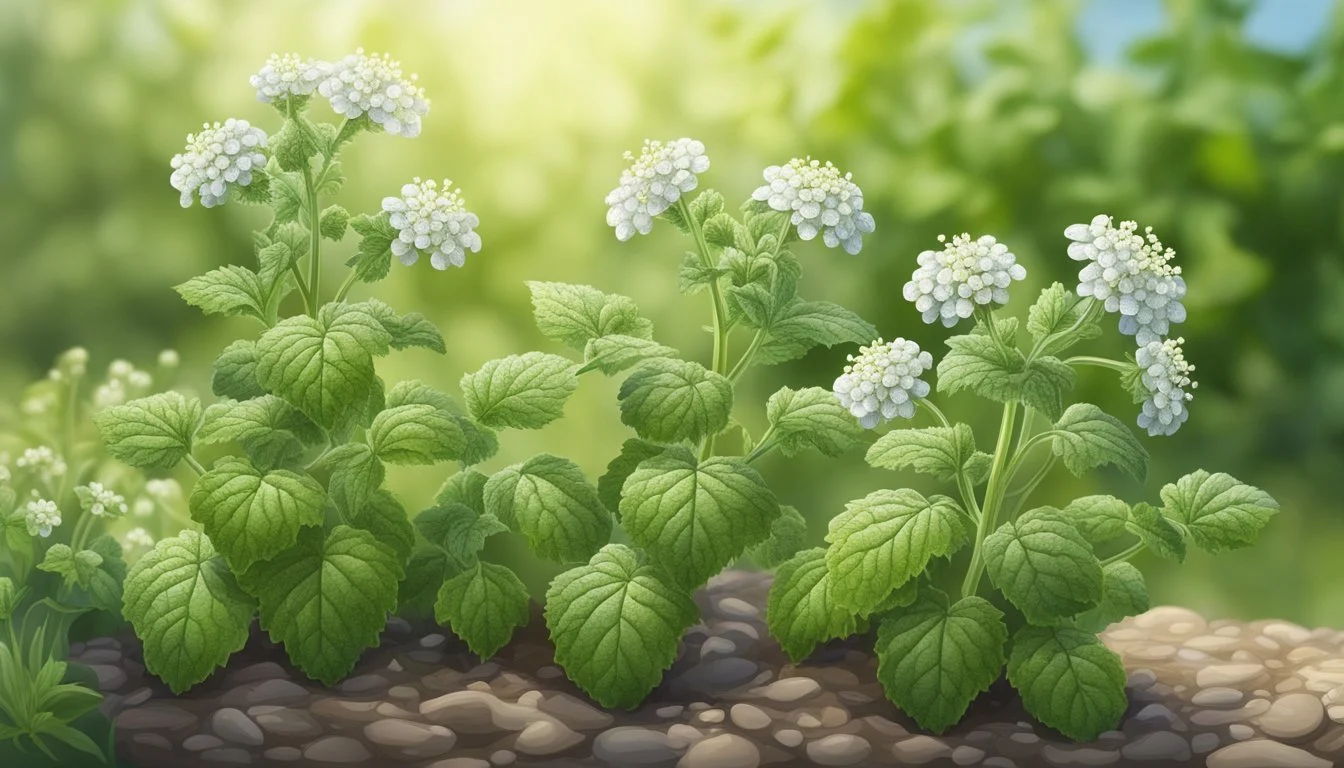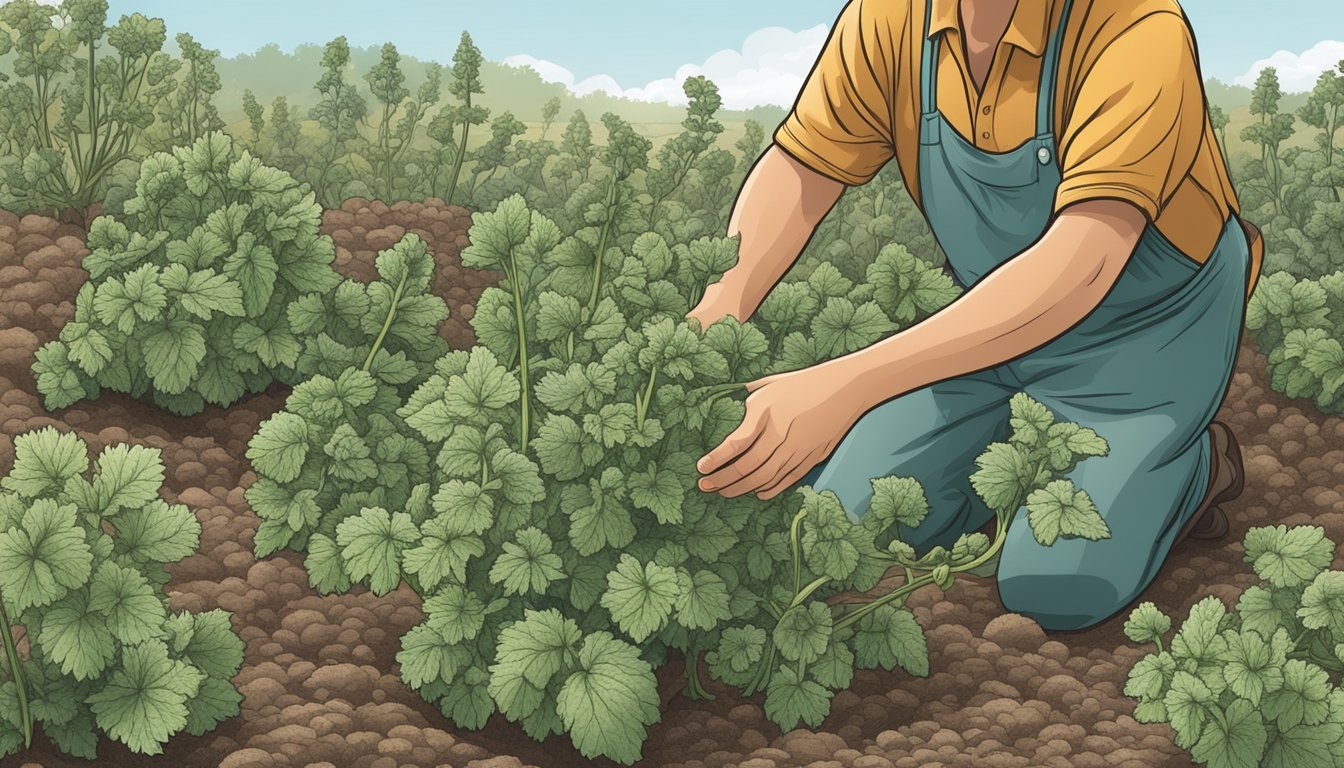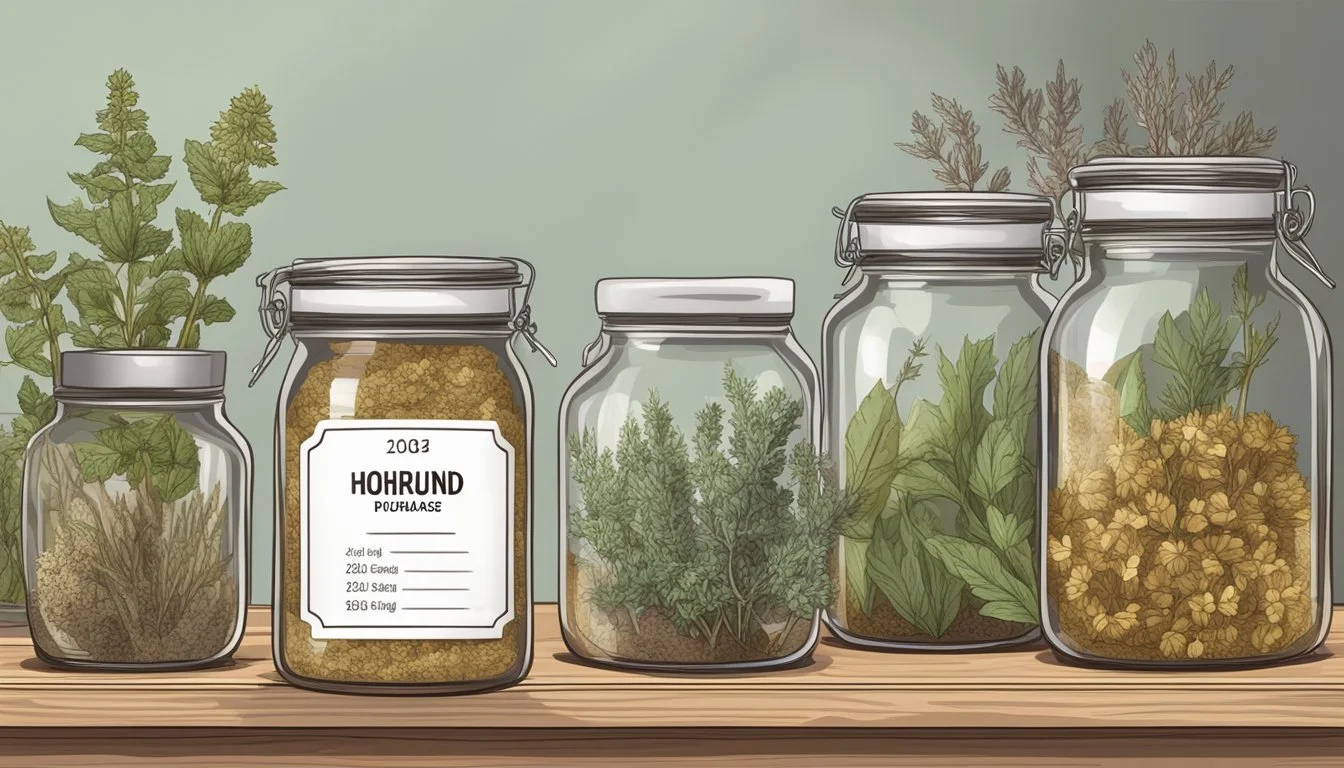How Long Does Dried Horehound Last?
Shelf Life and Storage Tips
Dried horehound, known scientifically as Marrubium vulgare, is an herb that is valued for its medicinal properties, particularly in traditional medicine. When properly dried and stored, horehound can have a considerable shelf life. To maximize the longevity of dried horehound, it should be kept in conditions that are cool, dark, and dry. Typically, the dried leaves are best used within a year of drying to ensure their medicinal potency and flavor remain intact.
Storage plays a crucial role in extending the life of dried horehound. It is imperative to store the herb away from direct sunlight, moisture, and heat sources that could diminish its quality. When preserved correctly in an airtight container, dried horehound maintains its beneficial properties for a significant period.
While the ideal usage timeframe for dried horehound is within a year, under optimal storage conditions, its shelf life can extend beyond this recommendation. Users should inspect their stored horehound for any signs of degradation or spoilage, such as a musty smell, discoloration, or presence of mold, which may point to a compromised product necessitating disposal.
Horehound Overview
Exploring horehound reveals a plant with historical significance and diverse applications, particularly known for its medicinal value and culinary use.
Botanical Profile
Marrubium vulgare, commonly referred to as horehound, belongs to the mint family (Lamiaceae). It is a perennial herb native to parts of Europe and North Africa. Horehound is easily recognized by its genus Marrubium which is comprised of numerous species.
Plant Characteristics
Horehound is a hardy, perennial herb that exhibits several distinct features. The plant has small, rounded, woolly leaves attached to square stems—a characteristic trait of the mint family. During its blooming season, it yields small flowers that range in color from white to pink. Both leaves and stems are edible and are often utilized in various preparations.
Historical Uses
Historically, horehound has had a prominent role as a medicinal herb. Its application can be traced back through history for treating respiratory ailments like coughs and bronchitis. It's a familiar ingredient in cough drops such as Ricola and is brewed into tea. The herb's widespread use across various cultures attests to its significance in herbal medicine.
Cultivating Horehound
Cultivating horehound begins with understanding its growth preferences and continuing through proper propagation and ongoing care. The perennial herb thrives in specific conditions and requires attention through its growth stages.
Optimal Growing Conditions
Horehound (Marrubium vulgare) prospers under full sun, which should be a key consideration when choosing a planting location. It prefers a well-draining soil, typically with a sandy or poor quality and a pH range between 6.0 and 7.0. The plant is tolerant to cold temperatures, making it a robust choice for various climates.
Growth Stages
After planting, horehound seeds will germinate, a process that may be erratic and can benefit from even moisture. As seedlings establish themselves, typically in spring, the plant will enter a vegetative state where it will grow and later produce flowers. In due course, it progresses to the harvest stage, where leaves can be picked and utilized for various purposes.
Propagation Methods
There are several methods to propagate horehound:
Seeds: Surface sow and lightly cover with soil to prevent wind disturbance.
Cuttings: Take cuttings in late spring or early summer.
Division: Divide the plant in autumn or early spring.
Containers: Horehound can also be grown in containers, which simplifies soil and moisture control.
Plant Care
To maintain a healthy horehound plant, consider the following:
Watering: Water moderately as it tolerates drought conditions well.
Fertilizer: Usually, no fertilizer is needed due to the plant's preference for poor soils.
Disease and Pests: Keep an eye out for common ailments and pests, although horehound has a natural resistance to many.
Maintenance: Prune to promote growth and prevent overcrowding, always ensuring proper air circulation.
Harvesting and Preservation
Proper harvesting and preservation are crucial for maintaining the quality and longevity of horehound. Following the right techniques ensures that the essential oils and therapeutic properties are retained for extended use.
When to Harvest
Horehound should ideally be harvested in the late spring or early fall, just before the plant begins to bloom. This is when the concentration of active compounds in the leaves is at its highest. The leaves and flowering tops should be cut on a dry day to reduce moisture content, which can lead to mold during the drying process.
Drying Techniques
To dry horehound, one should:
Spread the leaves and stems in a thin layer on a drying rack or clean cloth.
Place them in a warm, well-ventilated area out of direct sunlight to prevent degradation of essential oils.
Turn the material occasionally to ensure even drying.
Check for dryness after a week; properly dried horehound should crumble when pinched.
Storage Solutions
Once dried, horehound can be stored in the following way:
Transfer the dried horehound into an airtight jar with a tight-fitting lid to protect it from air and humidity.
Label the jar with the date of storage.
Store the jar in a cool, dark place at room temperature.
The properly dried and stored horehound could last up to one year without significant loss of quality. If longer storage is required, one can consider placing the jar in a refrigerator or freezer to further extend its shelf life.
Lifecycle of Dried Horehound
When dried horehound is properly stored, it retains its potency and flavor for an extended period. The lifecycle of dried horehound is influenced by environmental conditions and storage methods.
Shelf Life Determinants
Temperature: It should be stored at a stable, cool temperature, away from heat sources. High temperatures can speed up the degradation process.
Light: Store it in a dark place since light can lead to loss of potency and flavor.
Humidity: A dry environment is crucial as humidity can cause mold and mildew.
Storage Container: An airtight container is best to protect against humidity and pests.
Location: The storage area should be clean and free of contaminants that could affect the horehound.
The shelf life of dried horehound can extend up to 3-4 years if the above conditions are met. Longevity is a direct result of how the dried herb is stored.
Signs of Deterioration
Scent: A weakening of its natural, aromatic scent indicates that dried horehound is past its prime.
Flavor: If the flavor has diminished or altered significantly, it suggests deterioration.
Texture: Dried horehound should maintain a brittle, dry texture. Stickiness or clumping may be signs of moisture accumulation.
Mold: Any signs of mold or discoloration signal that the horehound should not be consumed.
Regularly checking the dried horehound for these signs can help ensure that it is used within its optimal period.
Utilization of Dried Horehound
Dried horehound is a versatile herb with applications ranging from culinary flavoring to medicinal benefits. Its distinctive bitter taste is a hallmark in various traditional remedies and confections.
Culinary Uses
In the kitchen, dried horehound primarily serves as a flavoring agent. It imparts a unique bitter profile that can be an acquired taste for some palates.
Tea: Often brewed to create a potent tea, valued for both its flavor and potential health benefits.
Candy: Horehound candy, a traditional use, capitalizes on the herb's bitter tanginess, often sweetened to balance the flavor.
Medicinal Benefits
Healers have utilized horehound for centuries, attributing to it several health advantages such as aiding respiratory and digestive systems.
Respiratory Ailments: Horehound is known to assist in treating coughs and colds, possibly helping to loosen phlegm and soothe sore throats.
Digestive Health: It may stimulate digestion and address issues such as indigestion and loss of appetite.
Blood Sugar: There is some evidence to suggest that horehound can influence blood sugar levels, but this benefit should be approached with caution and professional advice.
Home Remedies
Dried horehound is commonly incorporated into home remedies, valued for its natural remedy properties.
Tea: A go-to preparation for colds and coughs; the warm liquid combined with horehound's expectorant qualities offers relief.
Oil: Horehound oil might be used topically, though it's less common than other forms.
Dried horehound stores well and maintains its potency for an extended time when kept in a dry, cool place away from direct sunlight.
Purchasing and Selecting
When selecting dried horehound, one should take into account the quality indicators of the herb, as well as the sources and varieties available. Discerning the best attributes will ensure the optimal shelf life and efficacy of horehound.
Quality Indicators
The key to purchasing high-quality dried horehound lies in identifying its color, aroma, and texture. The herb should have a consistent grey-green color; any signs of fading may indicate age or poor storage. Quality horehound emits a strong, distinctive bitter aroma that should not be musty or stale. The leaves should be crisp to the touch, indicative of proper drying, and free from any wet spots or mold.
Sources and Varieties
One can buy dried horehound from a variety of sources. Herb gardens can provide freshly dried horehound if one prefers to dry the herb personally. Alternatively, dried horehound is readily available at markets and from online retailers. Different varieties may present varying degrees of bitterness, which is a characteristic quality of horehound. When purchasing, one should verify whether the product is labeled as common horehound (white horehound) or black horehound, as these varieties offer different properties.








